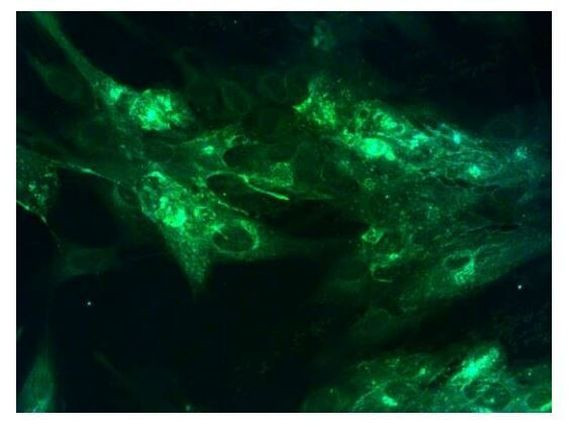Search Thermo Fisher Scientific
Invitrogen
Varicella zoster Virus Monoclonal Antibody (SG3)
Product Details
MA1-90605
Host/Isotype
Class
Type
Clone
Immunogen
Conjugate
Form
Concentration
Storage conditions
Shipping conditions
RRID
Product Specific Information
MA1-90605 detects Varicella Zoster virus from human samples.
Target Information
Varicella Zoster Virus (VZV), a member of the human herpes virus family, causes two distinct clinical manifestations: childhood chickenpox(Varicella) and shingles (zoster). Varicella is the outcome of the primary infection with VZV, whereas, zoster is the result of VZV reactivation from latently infected sensory ganglia which occurs precominantly in aging and immunosuppressed individuals. Glycoprotein E (gE), a 623 amino acid type I integral membrane protein, is expressed on plasma membranes and in the cytoplasm of VZV infected cells, where it is presumed to be present in the membranes of intracellular vesicles or organelles. VZV gE complexes with gI in the rough endoplasmic reticulum, and most gE exists in the form of gE to gI heterodimers in infected cells. VZV gE is also a predominant component of the virion envelope. The functions of gE, which is encoded by ORF68, are of particular interest because it has been demonstrated that ORF68 is essential for VZV replication. In contrast, the genes for gE proteins can be deleted from herpes simplex virus and pseudorabies virus, albeit with significant reductions in infectivity in cell culture and in animal models. Since the VZV genome does not encode a homologue of gD, VZV gE may have functions that are usually segregated between gD and gE, or the gE to gI complex, in other alphaherpesviruses.
For Research Use Only. Not for use in diagnostic procedures. Not for resale without express authorization.
References (0)

Performance Guarantee
If an Invitrogen™ antibody doesn't perform as described on our website or datasheet,we'll replace the product at no cost to you, or provide you with a credit for a future purchase.*
Learn more
We're here to help
Get expert recommendations for common problems or connect directly with an on staff expert for technical assistance related to applications, equipment and general product use.
Contact tech support

